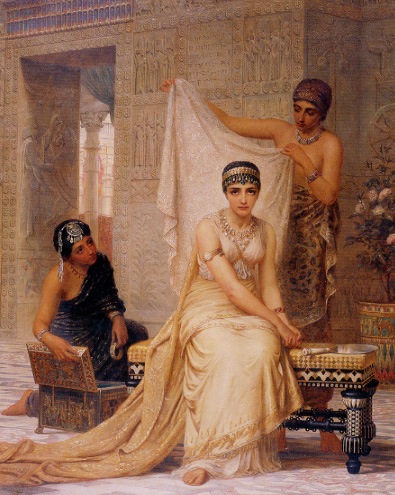I’ve been lucky enough to spent part of my Art History and French degree in Paris, a city where every walk offers inspiration, and every street a new perspective. Aside from the inherent aesthetic wealth, the collection of art galleries in the city is internationally recognised. One of its lesser-known is the Musée Jacquemart-André, a sumptuous town house – or more accurately town-palace – tucked away behind an unassuming façade on the Boulevard Haussmann. Miles from the hordes of the Musée d’Orsay and the Louvre, this gem recently hosted a Pérez Simón collection of Victorian paintings in an exhibition titled Désirs et Volupté.
At the very same time, the Musée d’Orsay was hosting an enormously popular blockbuster exhibition, Masculin/Masculin. The Orsay show dubbed itself a revolutionary exhibition exploring the use of the male nude in art, whilst the former explored Victorian painting with an unspoken emphasis on female sexuality. The Masculin/Masculin exhibition garnered attention purely because of the male subject matter. The Désirs et Volupté, however, was of interest because of the artists. By attempting to subvert stereotypes of gender in art, the Orsay merely reinforced them.
I went to both exhibitions within the same week, and was struck by the contrasts between the two. In Désirs et Volupté the obsession with the female pervaded the work of every (male) artist, and was justified because of their belief in ‘the cult of beauty’. But in Masculin/Masculin, the artists were almost exclusively males who were portraying different aspects of the male nude; creating a selective and collaborative self-portrait of all things masculine.
This prompted me to take a deeper look at the Désirs et Volupté show, and to consider what was being explored here. Interestingly, despite all the artists being men, there was a real emphasis on women, and even a section focussing on the femme fatale. Was this about the objectification of women, or was it a recognition of their innate power? Was proto-feminist view being presented in the work of Laurence Alma-Tadema, Edwin Long and their contemporaries?
I picked out two works that seemed particularly interesting to answer this. The first, Sir Laurence Alma-Tadema’s Roses of Heligobalus. Here, the idea of woman as entertainment and play-thing is immediately presented. Heligobalus is differentiated by his clothes: enrobed in a golden gown, he stands out immediately from the submerged women. It is not clear whether his fascination as he peers down at the women in the foreground is dominant or admiring; perhaps it is both. The women accompanying him share this gaze. The artist, maybe deliberately, creates an enigmatic scenario. As viewer, we are not immediately struck by the stately importance of Heligobalus, but by the frolicking women in the foreground. The subject of the painting is the women – they are in control here, even though they may not realise it. Subtly, the artist is representing the power of feminine of sensuality.
The second work that stood out to me was Edwin Long’s Queen Esther. The exhausted expression of Esther is a clear focus of the painting, but her imposing grandeur and the freedom depicted in the work reflect other messages. She is not a ‘prisoner’ in her situation, there is an open door with flowing curtains through which she could freely exit. The woman dressing her is not scantily-clad for the pleasure of a man, but for her own ease in the heat. These are women making choices for themselves. Why, also, did Long paint Esther in her own chamber and not in an official situation? Surely it was to emphasise her own personality and strength; to allow her to be the central figure, and not to sit alongside (and therefore under) her husband, Ahasuerus. Whilst she might appear miserable, the focus on expressing her sadness makes the painting remarkable as a royal portrait. This painting portrays a queen as a thinking individual, and not just as wife to a powerful ruler.
Suggesting these works are feminist portraits is perhaps anachronistic. Here the women are not equal to men in stature or power, but equal in their expressions, their physical position, as subjects worthy of deeper observation. What we see here is perhaps a small beginning to a movement which struggles on, even today.



